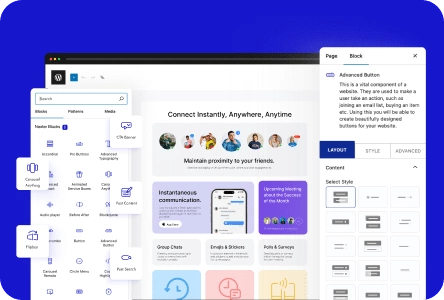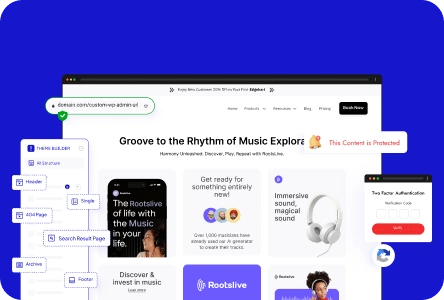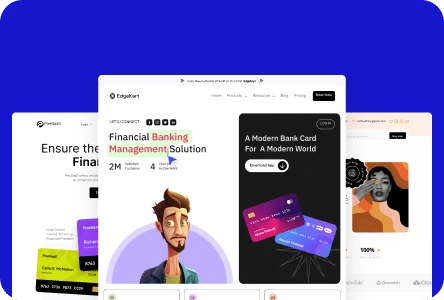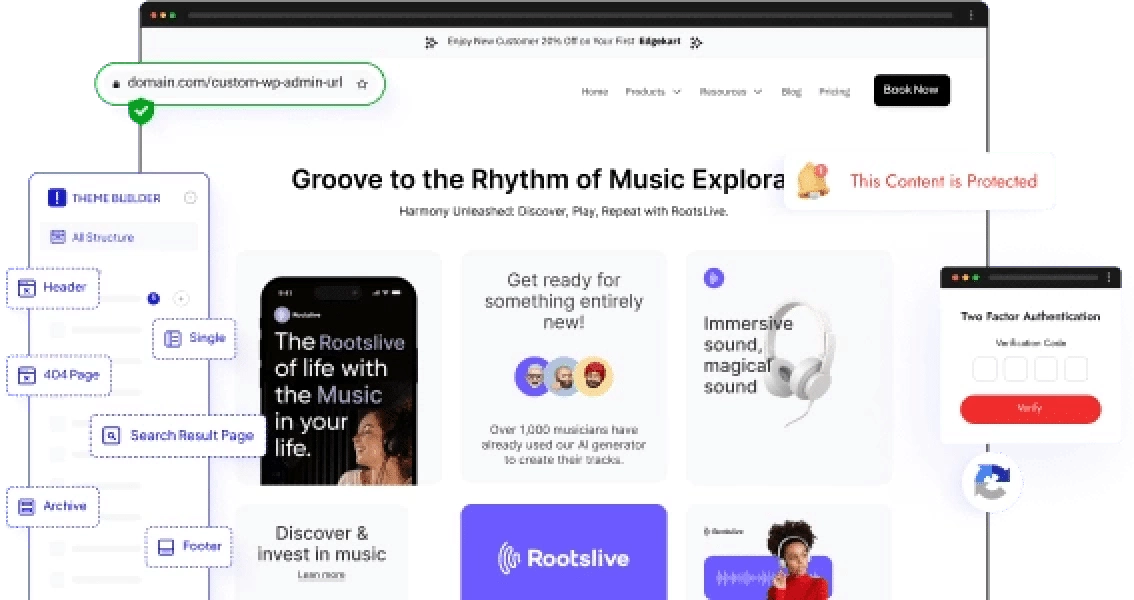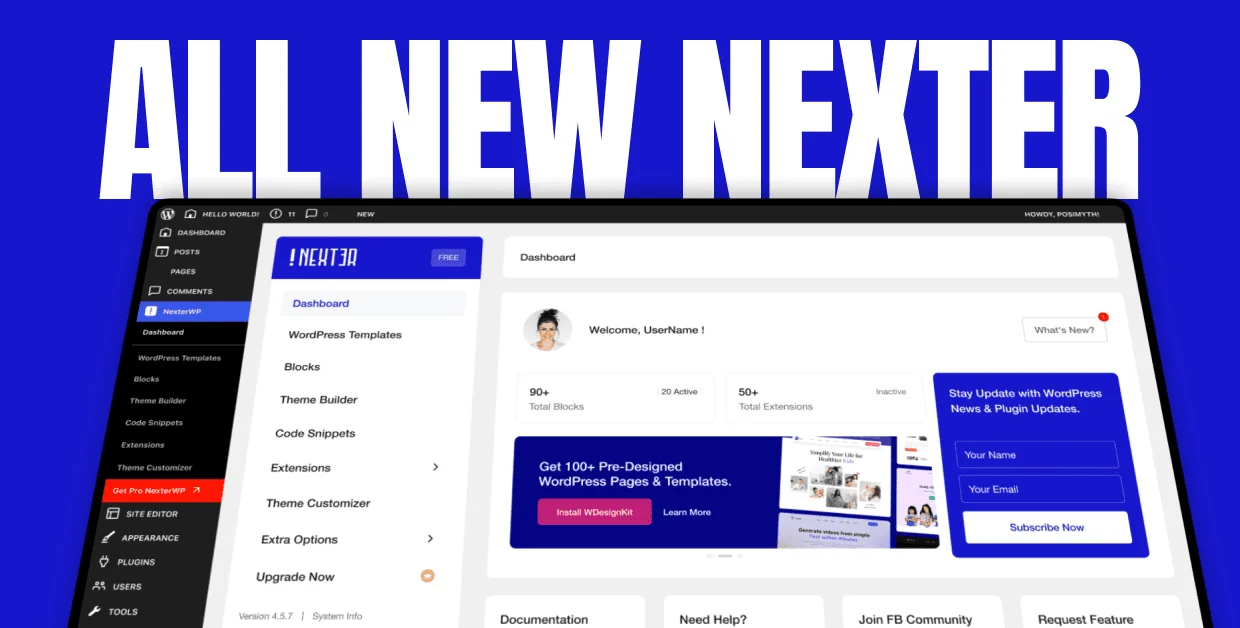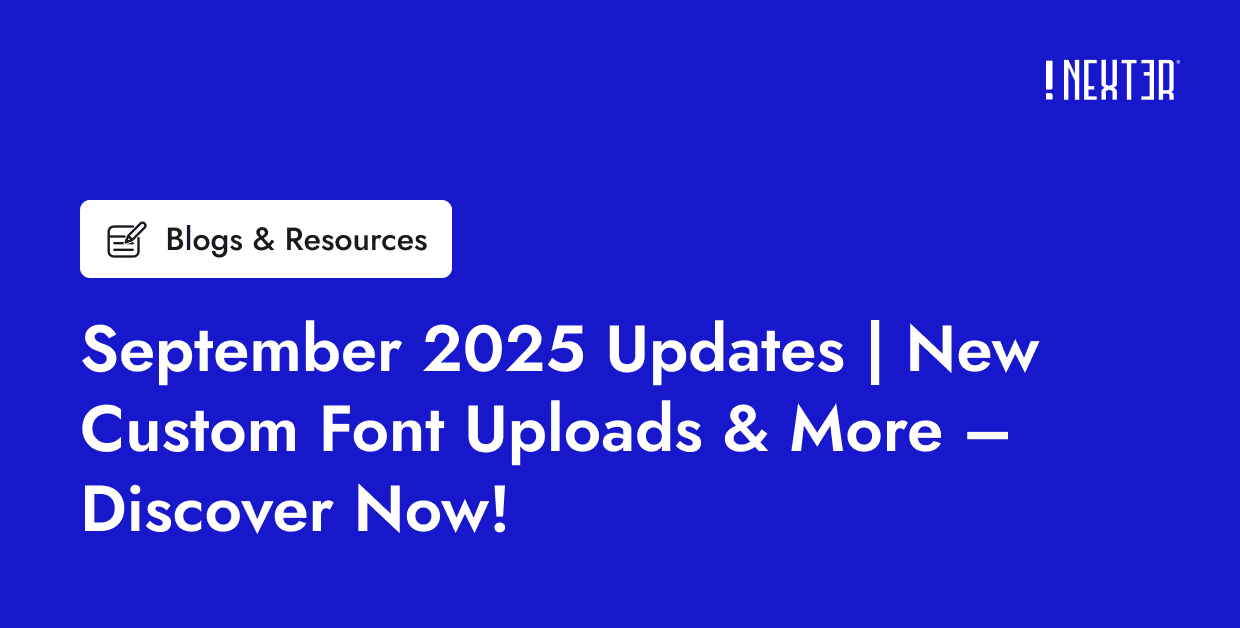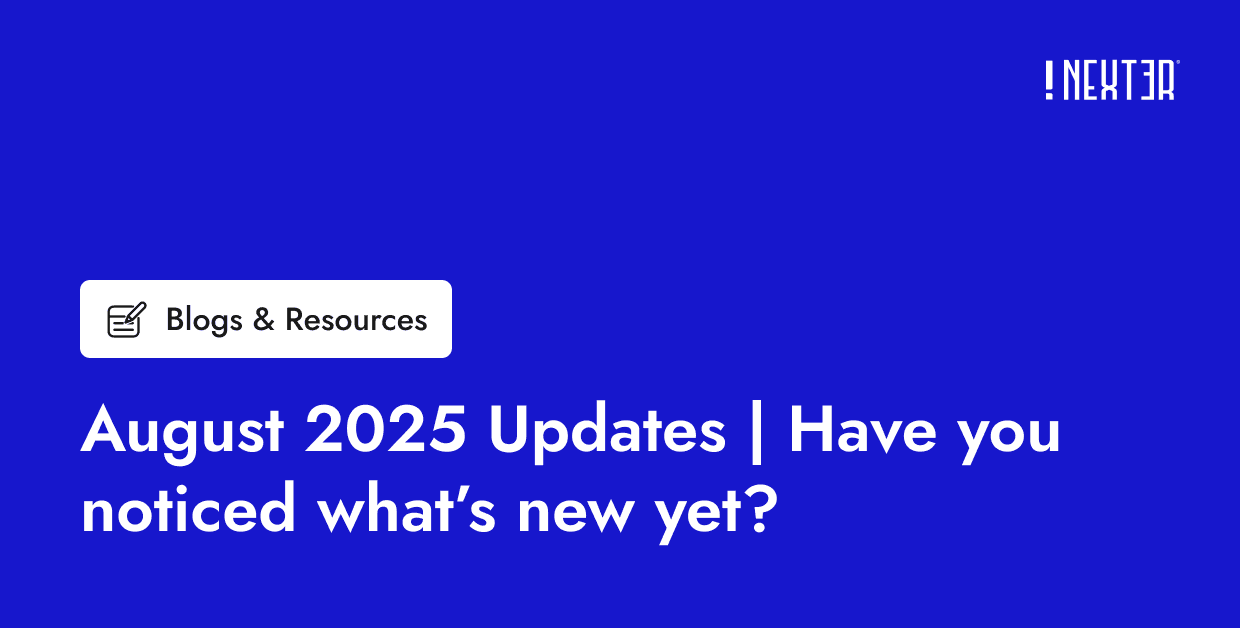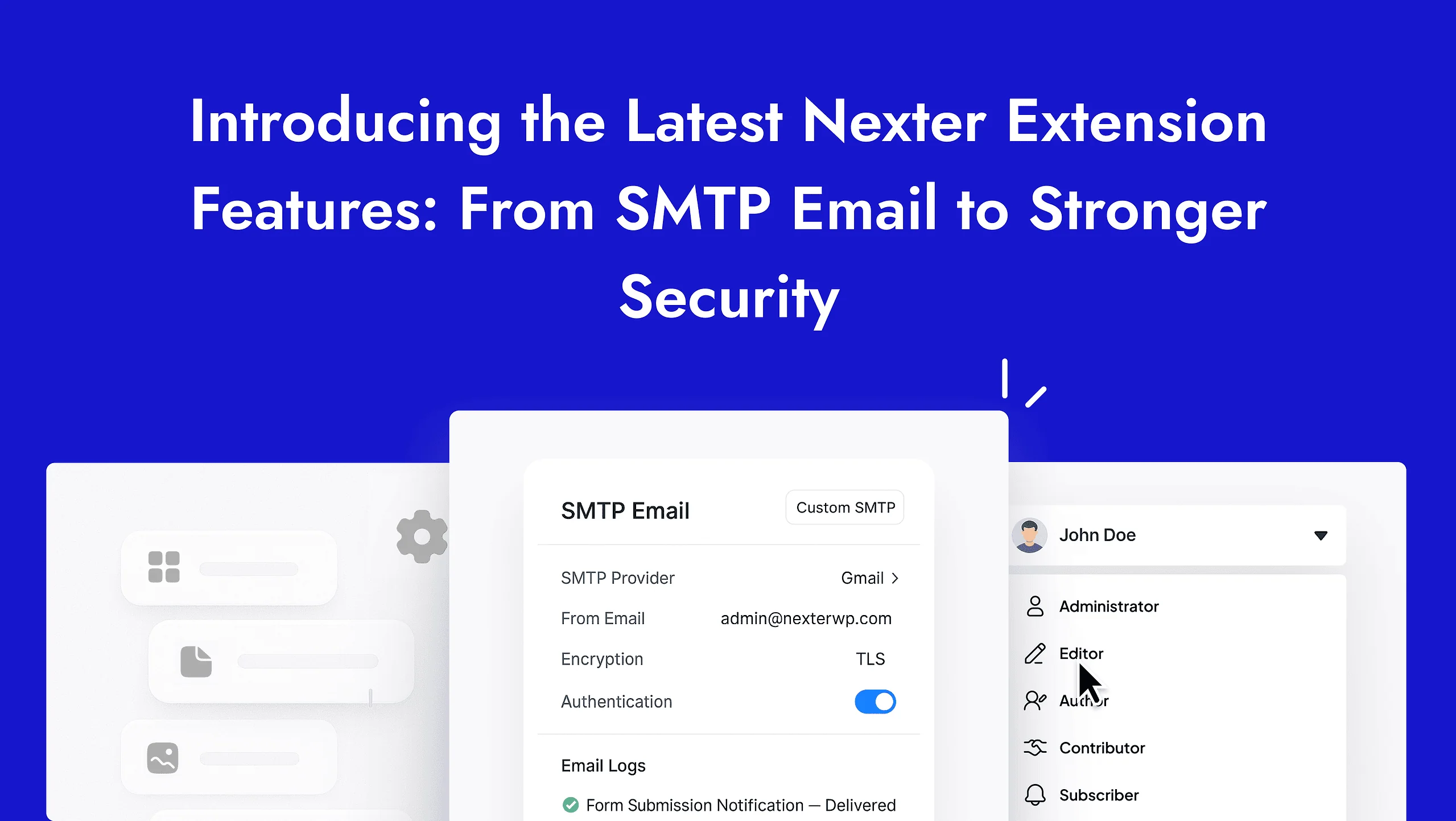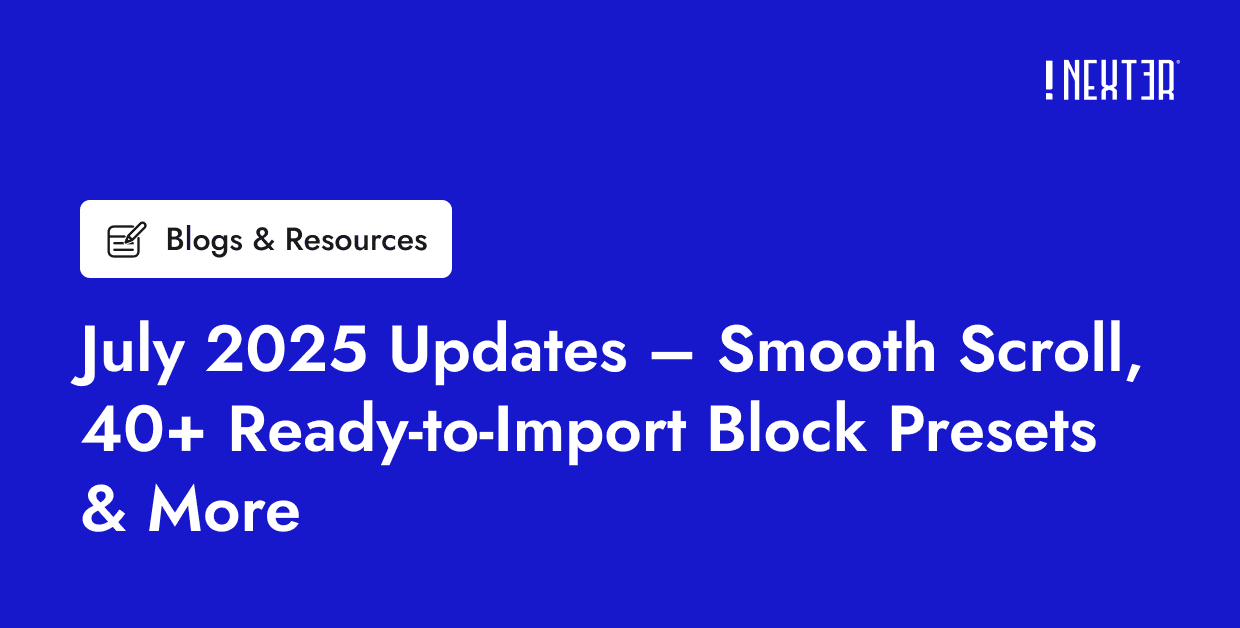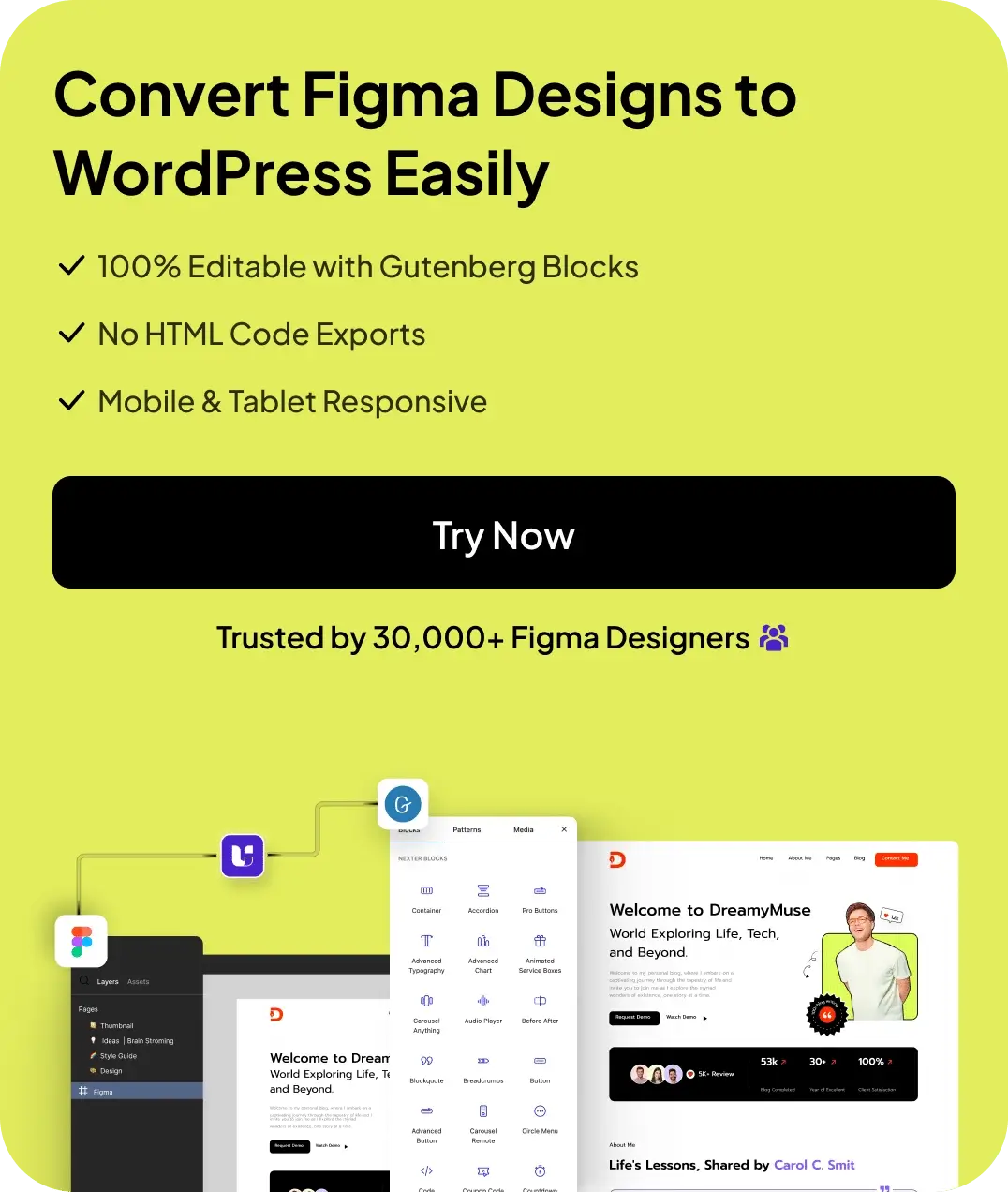A WordPress one-page navigation website is a modern design approach where all your content lives on a single page. Instead of navigating through multiple pages, users can scroll or click on menu items to move to different sections on the same page seamlessly.
But why is this design so popular? It’s not just about aesthetics. One-page websites are sleek, minimalist, and simplify navigation for your visitors while keeping your content visually engaging.
This is why they work perfectly for portfolios, small businesses, startups, or anyone looking for simplicity and impact in their web design.
So, how to create a one-page website in WordPress, especially if you’re new to it? This guide will walk you through every step, offering beginner-friendly tips to help you create a stunning one-page navigation website with ease.
What is a WordPress One-Page Navigation?
WordPress one-page navigation is a website design that allows you to present all your website’s content on a single page.
Unlike a multi-page website, a single-page website does not have additional About Us or Contact Us pages and instead displays all the content on a single, continuous page.
With a linear design, seamless scrolling, and a comprehensive navigation menu, the WordPress one-page navigation website offers an easy and user-friendly experience.
![How to Create WordPress One Page Navigation [Single Page Website] 5 WordPress One Page Navigation 1](https://nexterwp.com/wp-content/uploads/2025/02/WordPress-One-Page-Navigation-1.webp)
Example of a one-page navigation website- Dolox
Benefits of a One-Page Website with Navigation
- Simplified user experience: Visitors can access all the information they need in one place without navigating back and forth between pages.
- Faster loading times: With no need to load multiple pages, one-page websites often load faster, improving user satisfaction and SEO rankings.
- Enhanced mobile experience: Single-page layouts adapt better to mobile screens, making navigation smooth and intuitive for the user.
- Better engagement: By keeping users on a single page, you have the chance to enhance the website’s engagement. You can guide them through your content through an attractive design and smooth scrolling.
- Improved focus: Instead of distracting users with multiple pages and links, you can direct their attention to your key messages.
Create a professional homepage for a great first impression on your website visitors. Learn How to Edit Your Homepage in WordPress in 2025.
Steps to Create One-Page Navigation in WordPress
Step 1: Choose the Right Theme or Plugin
The foundation of any WordPress site is its theme and plugins. To create a one-page website in WordPress, you need a lightweight, responsive, and customizable tool that lets you build a professional and intuitive one-page website.
This is where the Nexter Theme and Nexter Blocks plugin can help you. The Nexter Theme is specifically designed to offer blazing-fast performance and custom website design, while Nexter Blocks provides over 90 Gutenberg blocks that make it easy to build beautiful and functional websites.
![How to Create WordPress One Page Navigation [Single Page Website] 6 the Right Theme or Plugin](https://nexterwp.com/wp-content/uploads/2025/02/the-Right-Theme-or-Plugin.webp)
You can add tons of interesting features – from mega menus and image galleries to social feeds/reviews, custom backgrounds, animation, and more.
Why choose Nexter? Because it’s an all-in-one solution. You can create a visually stunning one-page website with advanced features like smooth scrolling, sticky navigation, and customizable layouts—all without writing a single line of code.
Looking to make your website more dynamic and intuitive with text animation? Learn How to Add Text Animation in WordPress using a plugin.
Step 2: Plan Your Content and Layout
Before you start designing your site, it’s important to plan the structure and content. For a WordPress single-page navigation website, a well-thought-out layout will ensure that the website flows naturally and keeps users engaged instead of looking cluttered and overwhelming.
Start by identifying the sections your one-page website needs. Since all the website content will be displayed on a single, continuous page, it is important to use concise, impactful content for each section and avoid overloading visitors with too much information.
This is to say, each section should serve a purpose and guide visitors through your story or message. Some common sections include:
- Main section: Introduce your brand with a bold headline, engaging image, and a clear call-to-action button.
![How to Create WordPress One Page Navigation [Single Page Website] 7 Plan Your Content and Layout](https://nexterwp.com/wp-content/uploads/2025/02/Plan-Your-Content-and-Layout.webp)
Example- Designcraft.me
- About us: Share your mission, values, or personal story.
![How to Create WordPress One Page Navigation [Single Page Website] 8 Share your mission values or personal story](https://nexterwp.com/wp-content/uploads/2025/02/Share-your-mission-values-or-personal-story.webp)
Example- Formation Stone
- Services/Offerings: Highlight what you do or what you offer with brief descriptions and visuals.
![How to Create WordPress One Page Navigation [Single Page Website] 9 brief descriptions and visuals](https://nexterwp.com/wp-content/uploads/2025/02/brief-descriptions-and-visuals.webp)
Example- Formation Stone
- Portfolio/Projects: Showcase your work with images, videos, or case studies.
![How to Create WordPress One Page Navigation [Single Page Website] 10 Showcase your work with images videos](https://nexterwp.com/wp-content/uploads/2025/02/Showcase-your-work-with-images-videos.webp)
Example- Designcraft.me
- Contact Section: Include a contact form, social media links, and your location (if applicable).
In your WordPress page editor, simply click the ‘+’ icon to add as many sections as you need, depending on the website layout.
Step 3: Add Anchor Links for Navigation
With a WordPress one-page scroll website, navigation is typically managed through the main menu. Each menu item on the homepage links to an anchor point on the page, making it easier for users to jump to relevant sections without scrolling manually.
So, you’ll need to employ anchor links to ensure seamless navigation on the website. Here’s how you can create anchor links-
A. Find out the section IDs
To link your menu to the different sections on the website, you only need access to the unique IDs for different sections. In HTML, an ID is a unique identifier of a particular website element.
To find out each section’s ID, you’ll need to inspect the site’s code, which is easy to do using the browser’s inspector tool.
For this, open your site in the browser, right-click on a section, and choose Inspect.
![How to Create WordPress One Page Navigation [Single Page Website] 11](https://nexterwp.com/wp-content/uploads/2025/02/nexter.webp)
Look at the HTML code on the left and at the div of the whole section, and you’ll likely see the unique ID (e.g., id=” post-1234″).
Repeat the same process for all sections and save all the section IDs.
B. Add section ID in Gutenberg
If you’re building your website using Gutenberg, then click on the block for a certain section and navigate to the Advanced box on the right.
![How to Create WordPress One Page Navigation [Single Page Website] 12 Gutenberg](https://nexterwp.com/wp-content/uploads/2025/02/Gutenberg.webp)
Add the ID in the HTML Anchor (or Custom CSS field with no spaces. Make sure these IDs are unique, as you can’t have the same ID repeating on the same page.
C. Create the menu
Next, go to Appearance > Menus on your WordPress dashboard and create a new menu for your website. Choose the right location for the website menu.
![How to Create WordPress One Page Navigation [Single Page Website] 13 Create the menu](https://nexterwp.com/wp-content/uploads/2025/02/Create-the-menu.webp)
Skip this step if you’ve already created the menu for your website.
D. Add links to sections
Finally, you’ll need to use the Custom Links option to link various sections of your WordPress one-page navigation website to the menu.
Here, the link URL will be the unique ID of the section you want to link, with a ‘#’ as the prefix.
For instance, if you want to add a link for the menu item “Contact us”, which will take the user to the specific section whose ID is “post-456”, the URL will be #post-456.
This will add anchor links to your website sections for a seamless navigation experience.
Trying to create a custom menu but unable to add a page to it? Know How to Fix WordPress Can’t Add Page to Menu.
Step 4: Customize the Navigation Menu
Now that your navigation menu is ready, it’s time to customize its appearance to make it visually professional and appealing.
Using a WordPress one-page navigation plugin or Gutenberg blocks plugin such as Nexter Blocks, you can customize each aspect of the website menu, including fonts, alignment, colors, hover effects, typography and more.
Nexter Blocks offers advanced styling options, making it simple to create a navigation menu that stands out.
Plus, for your WordPress single-page navigation website, adding a sticky menu is an excellent option to enhance navigation and usability. A sticky menu is one that sticks to the top of your website. So even when the user scrolls down on your one-page website, the menu will always be visible.
- You can add a sticky menu using Nexter Blocks with the Sticky Fixed Header plugin.
![How to Create WordPress One Page Navigation [Single Page Website] 14 Nexter Blocks](https://nexterwp.com/wp-content/uploads/2025/02/Nexter-Blocks.webp)
- Simply install and activate the Nexter Blocks and add the Sticky Fixed Header Block to your website page in the WordPress editor.
![How to Create WordPress One Page Navigation [Single Page Website] 15 Fixed Header Block](https://nexterwp.com/wp-content/uploads/2025/02/Fixed-Header-Block.webp)
- Once added, you can use the right-menu to customize the header menu layout, alignment, style, sticky navbar behaviour, and more.
With the plugin, you have full flexibility to customize the sticky elements of the header menu and create responsive headers that work seamlessly across devices.
Step 5: Test Your One-Page Navigation
Once your site is designed, it’s time to test it thoroughly. Testing it will ensure that your navigation works seamlessly across devices and browsers, providing a consistent and smooth user experience.
Here’s what to test:
- Responsiveness: Use tools like Google’s Mobile-Friendly Test or browser developer tools to check how your site appears on mobile, tablet, and desktop screens.
- Cross-Browser Compatibility: Test your website on various popular browsers such as Chrome, Firefox, Safari, and Edge to ensure all users have a smooth experience.
- Anchor Links: Click on each menu item to verify that it scrolls to the correct section smoothly. If not, you’ll have to check and add the anchor links again.
Pro Tips for Better One-Page Navigation
- Use scroll animations: Adding smooth scroll animations can make your website feel more dynamic, professional, and engaging. Nexter Blocks offers access to plenty of WordPress blocks to add these effects without coding.
- Optimize section order: For a seamless website experience, arrange your sections based on user behaviour as well as the desired action you want them to take. For example, if most visitors would first like to check out your portfolio, place the “Portfolio” section higher up, followed by a CTA that encourages them to connect with you.
- Keep navigation simple: To avoid overwhelming the user with too much information or cluttering the website, limit menu items to 4-5 key sections for a simple layout.
- Add visual breaks: Use dividers or background changes to visually separate sections, making WordPress one-page navigation more intuitive.
- Highlight the active section: Since you don’t have multiple website pages, it can sometimes be difficult for the user to navigate the site. To make it convenient for them, consider adding a highlight effect to the menu item corresponding to the section currently in view. This helps users know where they are on the page.
An interactive one-page navigation website starts with a great layout. Create a well-structured website and check out 10+ Website Layout Ideas for Your First Design.
Why We Recommend Nexter Blocks for One-Page Navigation
When it comes to creating a one-page website in WordPress, Nexter Blocks is the ultimate plugin for WordPress users. Here’s why:
- Extensive block library: With over 90+ Gutenberg blocks, you can easily build a fully functional and customized website without relying on additional plugins.
- Smooth scrolling: Use blocks designed specifically to offer smooth scrolling and animation effects to enhance the navigation of your WordPress one-page scroll website.
- Responsive design: Nexter Blocks is highly optimized to offer a responsive website experience to your users, irrespective of the device and screen size they’re using.
- Ease of use: Even beginners can use Nexter Blocks to create professional-grade designs without any coding experience.
Stay updated with Helpful WordPress Tips, Insider Insights, and Exclusive Updates – Subscribe now to keep up with Everything Happening on WordPress!
Wrapping Up
WordPress one-page navigation websites are the perfect blend of simplicity and functionality. They offer a seamless and engaging user experience while being easier to design and maintain. With this step-by-step guide, you can now easily create a visually appealing and user-friendly one-page navigation website that stands out.
And to make your website even more intuitive and engaging, try Nexter Blocks. With over 90 Gutenberg blocks, it offers access to powerful customization options and advanced features, making it an ideal plugin for beginners and pros alike.
FAQs on One-Page Navigation Website
Can I create a one-page navigation without a plugin?
Yes, you can use WordPress’s built-in tools to create anchor links and customize menus. However, plugins like Nexter Blocks will help you create a highly functional and visually attractive website to attract your visitors.
What’s the best theme for a one-page WordPress site?
A lightweight and flexible theme like the Nexter Theme is ideal for one-page websites as it offers tons of customization and design features for a professional and dynamic website.
How can I make my one-page navigation mobile-friendly?
Use a responsive theme like Nexter Theme to create custom layouts and test your site on various devices to ensure a smooth and mobile-friendly one-page navigation.
Can I track conversions on a one-page website?
Use tools like Google Analytics to track user interactions and conversions on specific sections of your one-page website.
